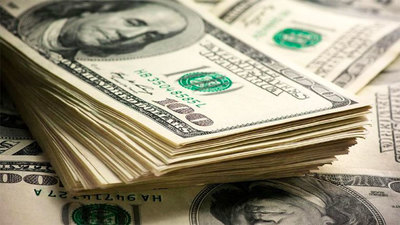In the first nine months of 2022, Uzbekistan’s public debt reached $26.2 billion. In Q3, it rose by about $300 million, but overall year-to-date it has decreased by $100 million, the Ministry of Finance said in a report.
The state external debt for nine months decreased by $400 million to $23.2 billion (30.1% of GDP). Of this amount, $17 billion is debt raised on behalf of the government and $6.2 billion is guaranteed by Uzbekistan.
Public domestic debt increased by $336.2 million over this period to $3.1 billion (4% of GDP). Of this amount, 9.3 trillion soums are government securities, $2.2 billion is domestic debt guaranteed by the state, which will be returned to the state budget.
Despite the growth of public debt, its ratio to the country's GDP has decreased from 38% at the beginning of 2022 to 34.1% as of October 1. According to the Ministry of Finance, this was facilitated by economic growth of 5.8% in the third quarter, a decrease in external public debt by 1.7% due to repayment of debt by $823 million, as well as diversification of the loan portfolio, that is, changes in exchange rates (Japanese yen, SDR , euro, Korean won and Chinese yuan), which led to a decrease in the balance of public debt.
At the same time, in January-October, Uzbekistan signed 16 new agreements on public debt for $2.059 billion and issued government bonds for 6.7 trillion soums. In 2021 and nine months of 2022, the government did not provide guarantees for domestic liabilities.
Debt breakdown by sector
Public external debt by sectors of the economy for the first nine months of 2022 looks like this:
- Budget support - $6.6 billion (as of January 1, 2022 it was $5.9 billion);
- Electricity - $2.7 billion (3.1 billion);
- Energy (oil and gas) - $2.9 billion (2.2 billion);
- Transport and transport infrastructure - $2.4 billion (2.6 billion);
- Agriculture and Water Resources - $2.5 billion (2.4 billion);
- Housing and communal services - $2.2 billion (2.1 billion);
- Chemical industry - $1 billion (1.2 billion);
- Education and healthcare - $0.8 billion (0.7 billion);
- Telecommunications — $0.2 billion (0.2 billion);
- Other industries - $0.94 billion (1.3 billion).
Lenders
Public external debt by creditors:
- Asian Development Bank - $5.4 billion;
- World Bank - $4.4 billion;
- State Development Bank of China and other sources in China - $2.1 billion;
- Eximbank of China - $1.9 billion;
- Japan International Cooperation Agency - $1.7 billion;
- International investors - $2.6 billion;
- South Korea Economic Cooperation Development Fund and other sources in this country - $1 billion;
- Islamic Development Bank - $0.9 billion;
- Japan Bank for International Cooperation and other sources in Japan - $0.4 billion;
- Other international financial institutions - $2.8 billion.
The Ministry of Finance believes that the sources of public external debt are sufficiently diversified. About 40.1% (up from 42.6% at the beginning of last year), or $9.3 billion, of this debt is held by foreign government financial institutions.
Currency structure of debt
The currency structure of external debt (which is one of the indicators of the actual risk to the economy associated with changes in the exchange rate) looks like this:
- US dollar - 74.8%;
- Japanese yen - 8.2% ;
- SDR (special drawing rights) - 7.7% ;
- Euro - 4.7%;
- Uzbek soum - 1.8%;
- Chinese yuan - 0.9%;
- South Korean won - 0.7%;
- Saudi riyal - 0.6%;
- Kuwaiti dinar - 0.4%;
- United Arab Emirates dirham - 0.03%.
In nine months, the share of the US dollar increased by 2.9 percentage points due to a decrease in the share of the yen, yuan, won and other currencies.
In January-October, the cost of servicing the public debt (at the expense of the state budget and state enterprises) topped $1.82 billion.
The report also lists projects financed by external borrowing.
In Q4 of 2022, the public debt should grow by $3 billion to $29.2 billion, former Finance Minister Timur Ishmetov predicted. The government failed to meet the deficit limit of the consolidated budget, and parliament approved an increase in government spending by $2 billion. By the end of the year 2023, the figure should reach $32.06 billion (36% of GDP).













